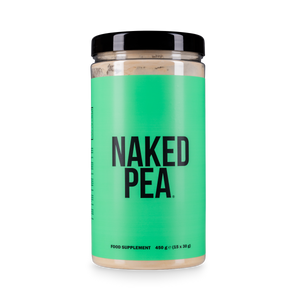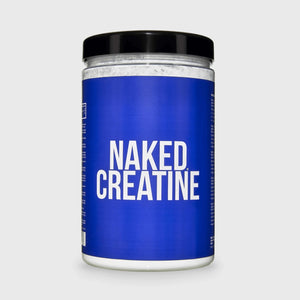You might not be aware that there are actual physiological differences between different forms of exercise.
By changing the way you exercise, you recruit different energy systems in the body, and can achieve different benefits. These exercise types most often fall into one of two categories: aerobic and anaerobic exercise.
Understanding the difference is important if you want to craft the most efficient workout plan for your personal fitness goals. To help you do that, we’ll explain everything you need to know about aerobic and anaerobic exercise, and how to know which one is right for you.
What is Aerobic Exercise?

Aerobic exercise is moderate-intensity exercise that your body is able to maintain for an extended period of time.
With aerobic exercise, the body primarily runs on oxygen, taking oxygen in through the mouth and to the lungs, where oxygen is then shipped through the blood to the muscles, where it powers the body’s movement.
While aerobic exercise increases your heart rate and makes you breathe harder, you can generally sustain this type of exercise for a long time before the body starts to give out, as long as you continue to breathe in fresh oxygen to be supplied to the muscles.
Examples of Aerobic Activities
Aerobic activities are what we typically think of when we think of cardiovascular exercise, or “cardio”.
Examples include:
- Walking or jogging
- Swimming
- Cycling
- Dancing
- Rowing
- Aerobics classes
- Kickfit
These exercises can also fall into the anaerobic category, however, depending on the intensity.
Benefits of Aerobic Exercise

There are many health benefits to aerobic exercise, including:
- Improved cardiovascular health (and lower risk of associated diseases)
- Lower blood pressure
- Greater lung capacity and v02 max
- Better mood and mental health
- Healthier body weight
- Good overall health and longevity
There are also practical benefits to aerobic exercise, because it’s easier to do, less taxing on the body, and can be done anywhere, without any equipment, training or supervision.
What is Anaerobic Exercise?
Anaerobic exercise is high-intensity exercise that your body is only capable of sustaining for a short time.
The anaerobic energy system kicks in when the normal oxygen you get from breathing is not enough on its own to supply all the energy your muscles need to function.
In this case, the body taps into other energy sources, such as adenosine triphosphate (commonly known as ATP) and glucose.
Examples of Anaerobic Activities

Anaerobic activities are those that you can only maintain for a limited time, due to the higher level of intensity.
Some examples include:
- Sprinting
- Weightlifting
- High-intensity interval training (HIIT)
- Plyometrics (jump training)
- Heavy resistance exercises
- Martial arts
- Sports and sports drills
As mentioned before, the same exercises can toggle between aerobic and anaerobic depending on the intensity.
For example, jogging or light running is aerobic, until you reach a certain pace, when the anaerobic system kicks in.
In sports, too, there will be some points where you’re using the aerobic energy system, and others that require short bursts of intensity which come under the anaerobic classification.
Benefits of Anaerobic Exercise

Anaerobic provides a lot of the same health benefits as aerobic exercise, such as better cardiovascular health and longevity.
Anaerobic exercise however has greater benefits in certain areas, including:
- Muscle strength and power
- Weight loss and body composition
- Bone density
- Coordination
It also has the practical benefit of taking less time to get similar benefits in terms of caloric output than aerobic exercise.
Key Differences Between Aerobic and Anaerobic Exercise

Let’s summarize the key differences in terms of aerobic vs anaerobic exercise.
Energy Systems Used
Aerobic exercise uses the oxidative energy system, which is powered primarily through the oxygen we breathe. Anaerobic exercise uses both the ATP-PC system and glycolytic system, both of which use the body’s existing energy stores.
Duration and Intensity
Aerobic is long, sustained, moderate-intensity, while anaerobic exercise is short and high-intensity.
Types of Activities
Aerobic exercises are your typical forms of cardio, such as moderate-paced running, cycling and swimming, while anaerobic includes things like HIIT workouts, sprinting and weightlifting.
Benefits
Aerobic exercise mostly benefits cardiovascular health and lung capacity, while anaerobic exercise has more structural and performance benefits, such as muscle strength and power and benefits for body composition.
How Do You Know if an Exercise is Aerobic or Anaerobic?

So how can you tell whether an activity you’re doing is aerobic or anaerobic? Do you need to keep a cheat sheet with you everywhere you go, listing which exercises are aerobic and which are anaerobic?
The talk test is a commonly used tool to gauge exercise intensity. If you can comfortably maintain a conversation while exercising, you’re likely in an aerobic state.
You can also tell by your heart rate zones. Zone 2 (around 65% of your max HR) is generally aerobic exercise, while zone 3 and above are anaerobic. So if you work out with a fitness tracker (such as a smart watch), you’ll be able to tell whether what you’re doing is aerobic or anaerobic.
Fueling Aerobic vs Anaerobic Exercise
Each type of exercise requires a different approach to fueling the body.
Since most of the fuel you get from aerobic exercise comes from oxygen, you can likely sustain this activity without any special attention to what you eat or drink.
Just make sure you have a regular caloric intake, and that you get enough hydration to replace what you lose from sweat.
For anaerobic exercise, however, your body relies mostly on stored glycogen for energy, which it gets from carbohydrates.
So in the hours prior to doing anaerobic exercise, you’ll want to have a higher carb intake.
Creatine is also beneficial for anaerobic exercise, as it plays an important role in the ATP-PC energy system and the production of ATP, the other key energy source used for anaerobic activities.
How Much Aerobic and Anaerobic Exercise Do You Need?

The CDC recommends that adults get at least 150 minutes of moderate-intensity exercise (aka aerobic exercise) each week.
Alternatively, they recommend you could substitute that with 75 minutes of vigorous-intensity exercise (activities that would likely fall under the anaerobic category).
They also suggest that you can get a mix of the two - such as 100 minutes of aerobic exercise and 30 minutes of anaerobic exercise, for example.
Are There Any Risks with Aerobic or Anaerobic Exercise?
Generally, both aerobic and anaerobic exercise are safe and extremely beneficial for health, wellbeing and longevity.
The higher the intensity, some risks can emerge. These are more pronounced with pre-existing conditions, such as cardiovascular disease, diabetes, arthritis, joint problems or musculoskeletal injuries.
In most cases, though, low-intensity aerobic exercise can be beneficial for people with health conditions.
If in any doubt, consult with your doctor over whether any physical activity is safe for you.
Which is Better for Weight Loss?

Though we typically think of cardio (i.e. aerobic exercise) as the go-to for weight loss, it’s actually the other way around.
Anaerobic exercise is better if you want to lose weight or body fat. There are a number of reasons why:
- Anaerobic exercise burns a higher amount of calories in a shorter space of time.
- The anaerobic energy system taps into the body’s stored energy sources, such as surplus carbohydrates which the body has stored as body fat.
- Anaerobic exercise generates the “afterburn effect”, or excess post-exercise oxygen consumption (EPOC). This means the body keeps burning calories even after the exercise is over, thus increasing the overall calorie output from your workout.
Of course, aerobic exercise will still help you lose weight, and any type of exercise is better than nothing. But anaerobic will likely give you the best results.
Which Type of Exercise is Right for You?
Both aerobic and anaerobic exercise have immense benefits for health and performance, and we recommend you fit either one, or both, into your day to day schedule.
Of the two, anaerobic exercise tends to have the most benefits, and is the most efficient, especially if you’re exercising to lose weight or improve your body composition.
However, aerobic exercise will be a better fit for some, such as beginners with lower fitness levels, people with health considerations, and those who want a more leisurely and comfortable workout.
Ultimately, the best type of exercise is the one you can maintain consistently over a long period of time, whether that’s jogging, swimming, or a daily 30-minute HIIT every morning.









